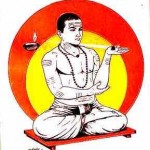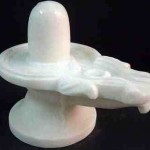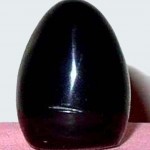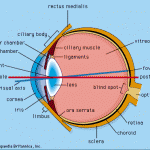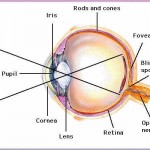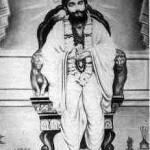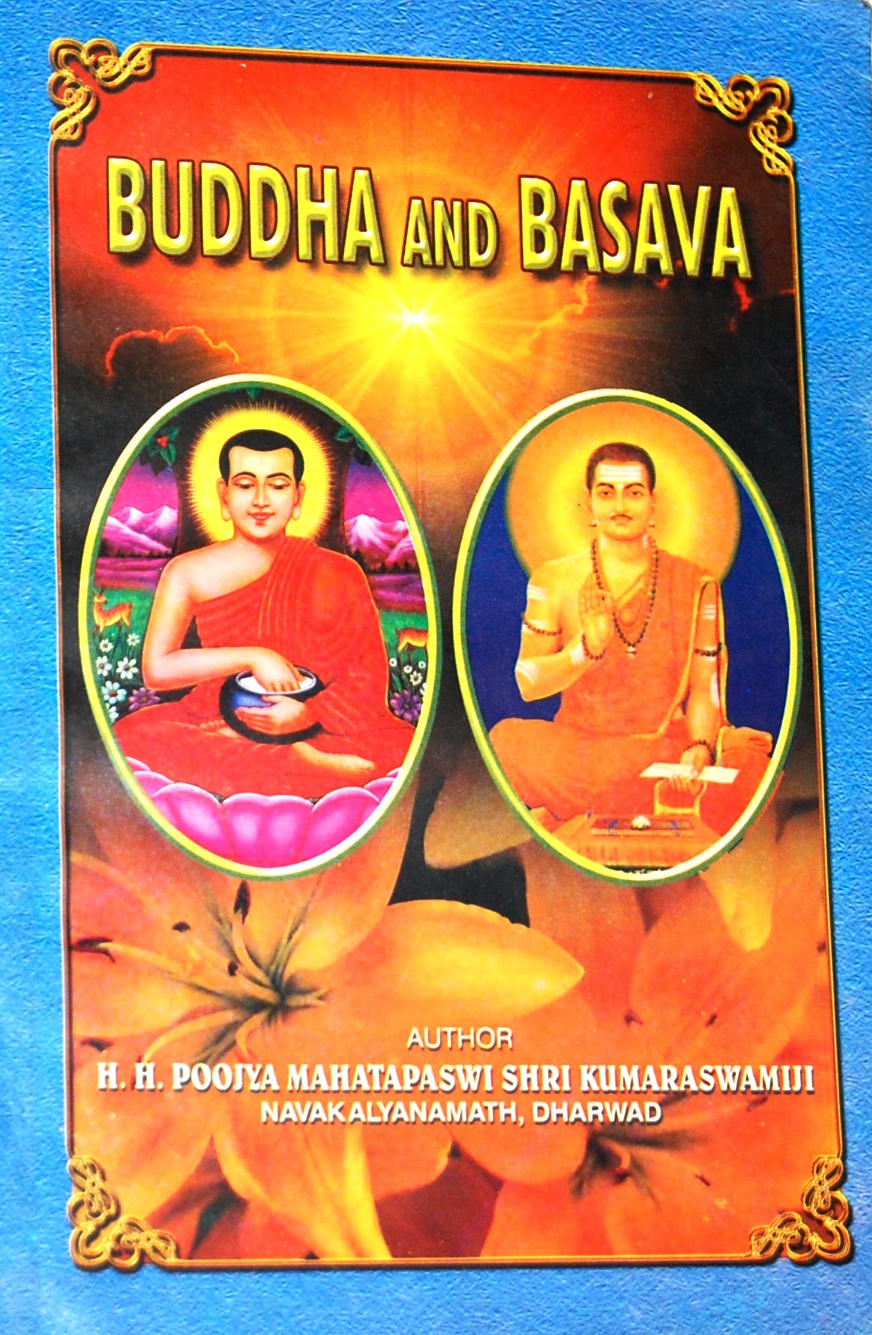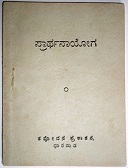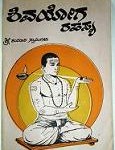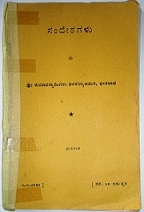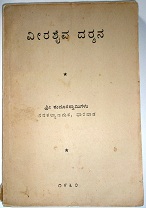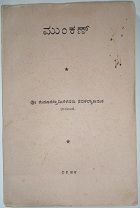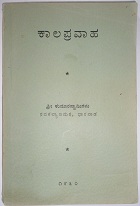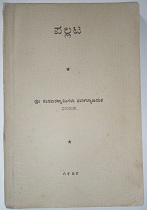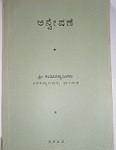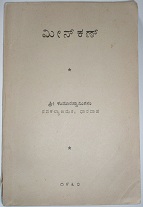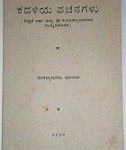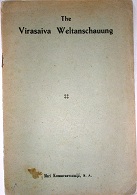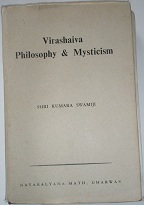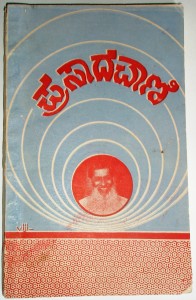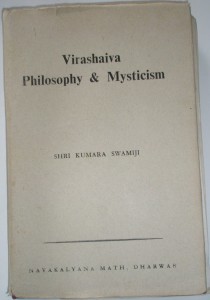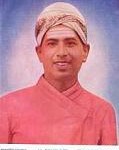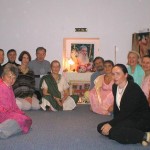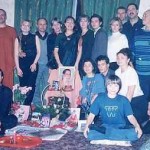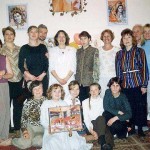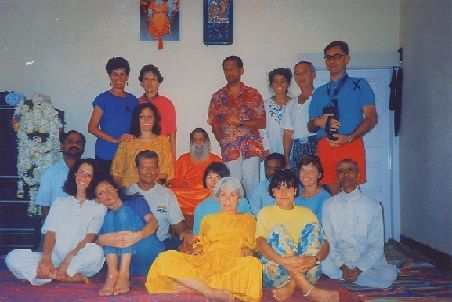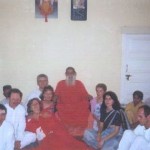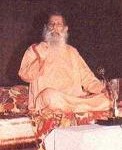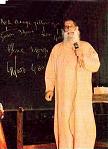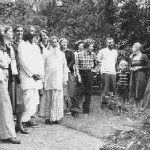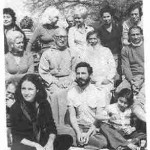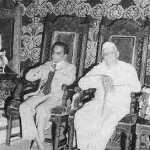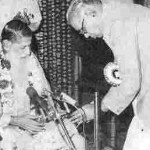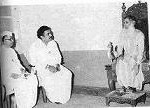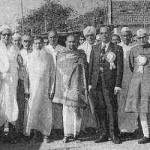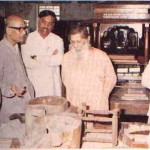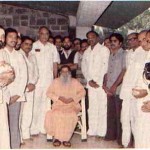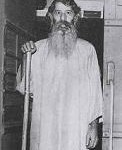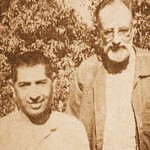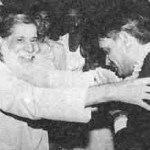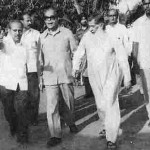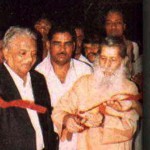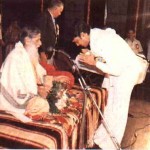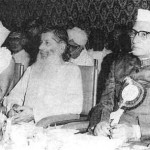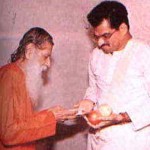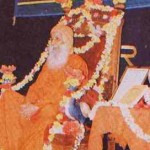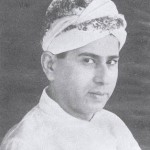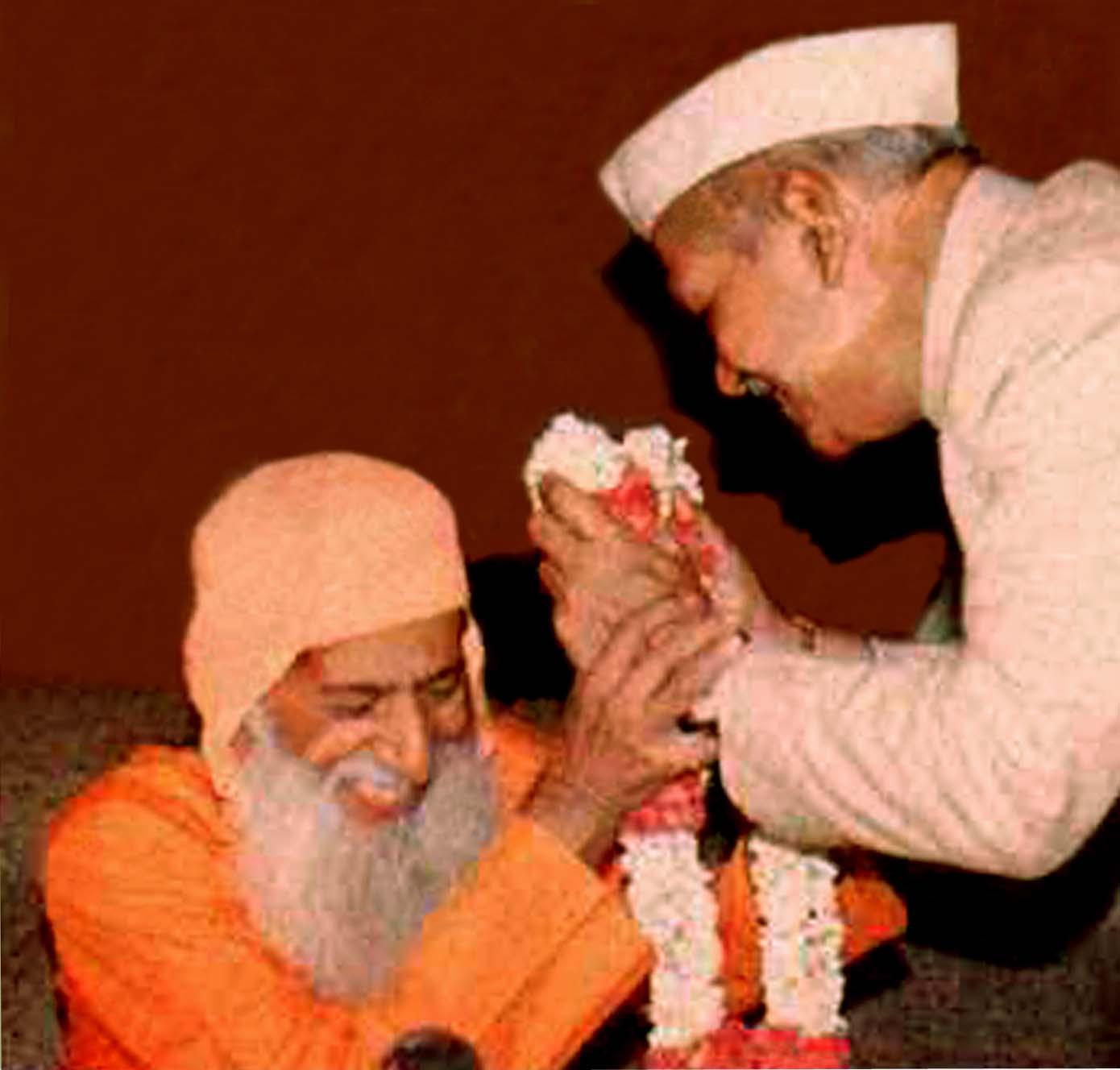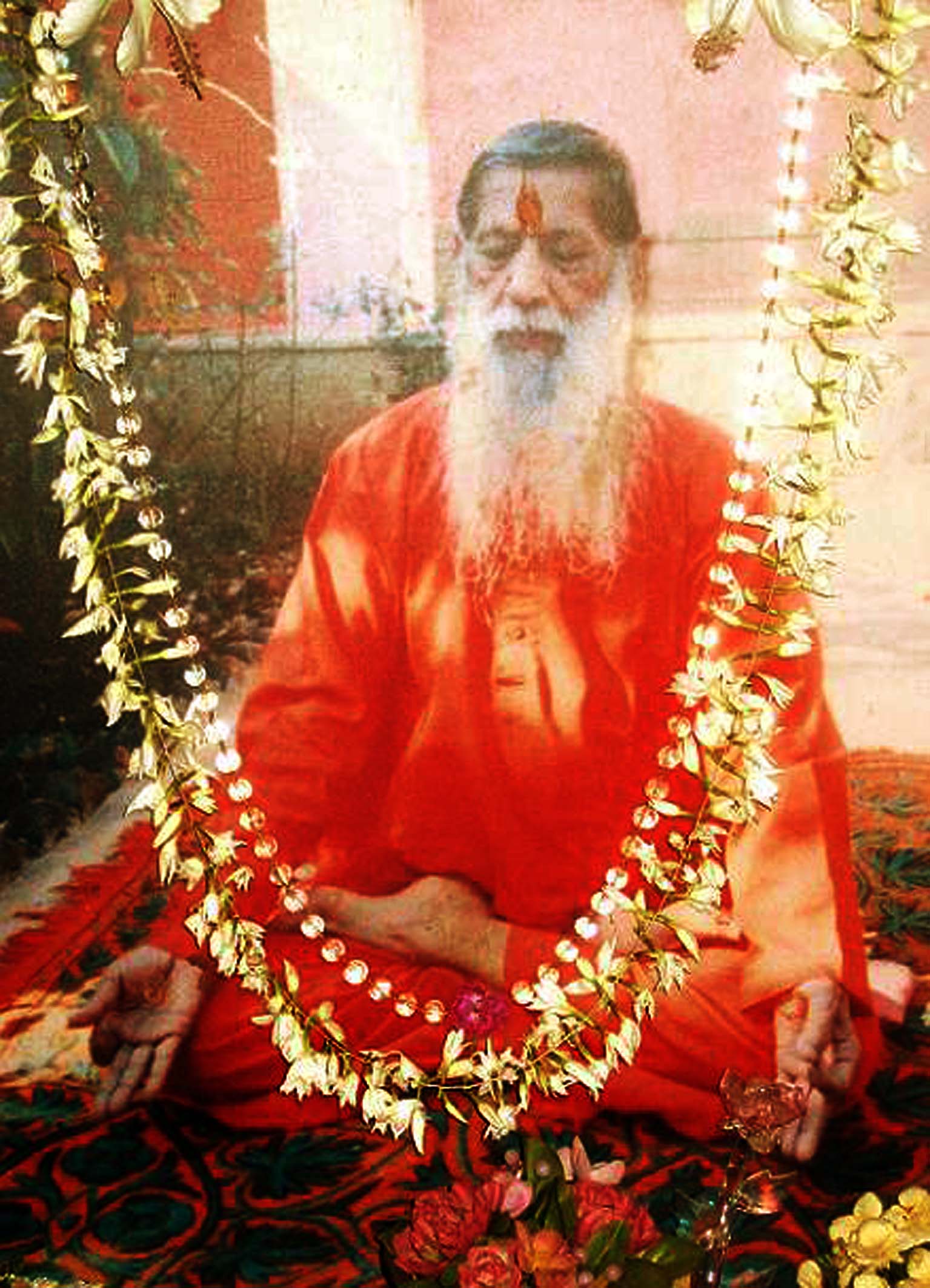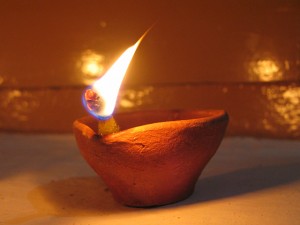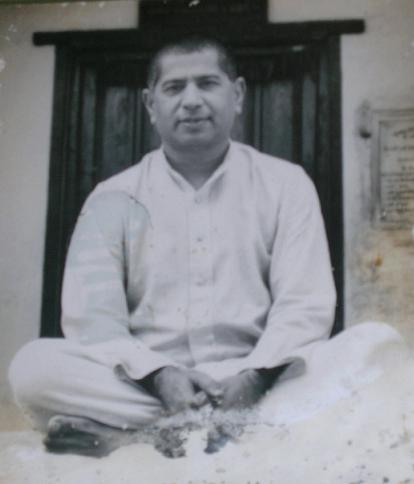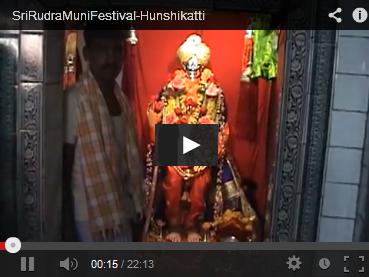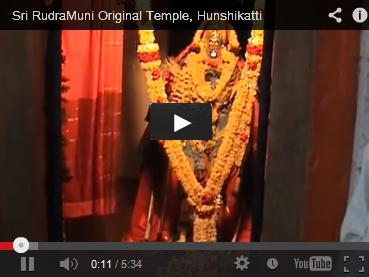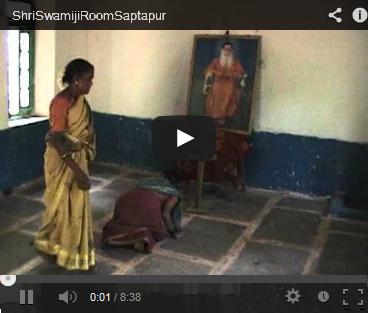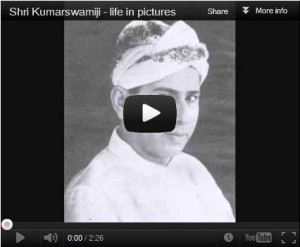The practice of Shiva-yoga with meditation on the form of Linga attained its fruition and perfection because Shiva-yoga became an integral yoga at the hands of the Veerashaiva saints of the 12th century A.D. Shiva-yoga consists of five aspects namely, Shiva-jnana, Shiva-bhakti, Shiva-dhyana, Shiva-vrata and Shiva-puja. Shiva-yoga and Shiva-puja are synonymous, so Shiva-yoga contains four elements namely, knowledge, devotion, meditation and conduct – all pertaining to Shiva.
Shiva-yoga is integral in the sense that it comprises within itself Jnana-yoga, Bhakti-yoga, Karma-yoga and Raja-yoga.
From left to right – The four aspects of Linga, Pose of body during worship, Shivalinga, kernel of Ishtalinga, Ishtalinga has Shivalinga as its kernel
In the 12th century in Karnataka there was a galaxy of Lingayat saints, the preoccupation of whom was to realize God and to remould the individual life and social institutions by that realization. The number of these saints or mystics ranged from two to three hundred amongst whom there were about sixty women mystics of whom Akka Mahadevi was the beacon light. Basavanna and Allama Prabhu were the two distinguished names that gave a decisive turn to the religious renaissance of the 12th century. Almost all the saints have sung their realization in different strains and expressed their views and opinions on men and society in varied sayings. The collection of these sayings is known as the Vachana Shastra � the scripture of the Lingayat faith. The sayings of Basava are characterized by the sublimation of elegance, the apotheosis of merit, the transfiguration of grace. But in reading the sayings of Allama Prabhu we seem to be the spectators of a life drama and onlookers of a Master spirit’s progress and development through the stress and stir of the eternal yea and nay. This spirit of detachment and idealism is manifest throughout his sayings whose cryptic expression surpasses in a way that of Carlyle in his Sartor Resortas, of Shakespeare in his Sonnets or of Tennyson in his In Memoriam. All the saints have realized the goal of life through the practice of Shiva-yoga which is otherwise known as Lingangasamarasya. The self of the cosmos and the self of man are identically the same and so are one. The self or the individual is termed Anga which is Chit-rupa, the pure conscient. The self of the cosmos is termed Linga which is Sat-rupa, the pure existent. And that Anga and Linga are one and the same is proved by the subjective mode of worship, that is, Ahamgrahopasana. The realization of the one Being in the objective world-process through self-awarenes is Samarasya, delight equal and equable. Samarasya is therefore Ananda-rupa. “If there were not”, says the Taittiriya Upanishad, “this all encompassing ether of delight of existence in which we dwell, none could live”. The world-process then is not a chaos as the materialist holds but a fairly charming cosmos as the mystic observes. “Creation springs from one glad act of affirmation, the everlasting yea, perpetually uttered within the depths of the Divine Nature …… the whole creation is the play of the Eternal Lover, the living, changing, growing expresssion of God’s love and joy”. It is participation in God’s love and joy, penetration in the one Infinite Life that is the aim of Shiva-yoga.
In the Vachana literature, Ishtalinga is sometimes described as a mirror, for a simple reason that its covering is as transparent as a mirror. Moggeya Mayideva explains this concept of mirror to the fullest extent in his Shatakatraya. In the initial stage, when the disciple begins to gaze on Ishtalinga, the mirror, he feels conscious of the difference between himself and the mirror. In the next stage, his attention is attracted more by the reflection of his face than by the actual mirror. Thus his mind turns from a definite object to a subject not belonging to this world of time and space. The final stage is reached when his attention is so much absorbed by his reflection that he completely ignores the very presence of the mirror in his hand and he feels himself totally at one with reflection which is nothing but his own face. This identity is achieved through intense gazing.
There is a cryptic saying of Prabhu which runs thus: “The eye is to the eye, the eye is in the eye, the eye is the sight, sight is the light, light is consciousness. Things are lighted by the light of consciousness …. Lo, in the black iris of the eyeball lurk the fourteen worlds”. It is through the eye that attention is focussed on Linga (placed at the palm of the left hand) which serves as a lens to open the third eye.
The eyes are expansion of the optic nerve which is a direct prolongation of the brain. The nerve spreads out into a thin layer called retina in which are situated microscopic bodies called rods and cones. It is the excitation of these rods and cones in retina that sends up sensory impulse to the brain which it translates as vision. The eyeball is situated in the orbital cavity amidst a cushion of fat and is moved in various directions by muscles. The eyeball consists of an interior and a posterior chamber and the external coating of the eye in its front portion is called cornea, behind the seleritic coat. The cornea is glassy and transparent; the partition between the two chambers is formed by the crystalline lens being suspended by a circular screen or iris which is hanging like a curtain from a band of ciliary muscles. It is this iris that forms the black centre of the eye and the operture through it is called the pupil. The size of the pupil is controlled by the ciliary muscles. The posterior globe is full of a viscid fluid called vitreous humour. The glassy cornea, the aqueous humour, the lens and the vitreous humour all serve to focus rays of light on the retina so as to form a true image thereon for the brain to perceive.
Anatomical Structure of an eye
Of all the organs the eye is the most enigmatic. it is almost spherical and from an occult point of view it has, like the earth, a north pole – the optic disc and a south pole – the surface of the cornea. Dr. Baker, renowned writer on the esoteric knowledge, resembles the eye to the planet earth. Says he: “The linings of the eye (when it is considered by analogy to the planet earth) are related to the three lower kingdoms: sclera – mineral kingdom; choroid – plant kingdom; retina – animal kingdom. In turn, the rods may be regarded as the representatives of the higher animals and the cones correlate with the human kingdom. Those few cones gathered in the moccula represent, in this analogy, Man on the path, becoming receptive to extra systemic light (the energy of monad). The cone cells of the fovea represent the initiates all responding to the energy or monad from the fovea; the divinity is seen to rest behind the lens and iris.”
The yoga science long ago affirmed that the human eyes have hidden potential, that they pour out energy and that this energy can enhance the words spoken, the look that is directed, the teaching that is given. In this sense eye is a creative organ. “Every service rendered to our fellow-men, every glance of compassion, every act of healing is accompanied by a release of energy from the eyes”. Recently Dr. Oscar Brunler has discovered an instrument which enables him to measure something of the energies given off by the human eyes. He proves that not only is this energy very real, but that in any creative act like the painting of a picture or the chiselling of a statue, the energies peculiar to the artists are incorporated in the work of art being produced. His device has been able to measure the energy output of a particular artist in biometric degrees. It is needless to say that he is qualified to analyse the creative energies in this way of many famous people.
That the human eyes pour out energy does not come to us as a surprise in view of the fact that they represent part of the human brain. The eyes, in fact, contain the optic nerves which are themselves the prolongation of the brain and they can be observed with the help of an ophthalmoscope as white discs on the back of the eye at the level of the retina. When the brain radiations are measured, with an electroencephalogram, it is no wonder to measure the energies given off by the eyes as part of the diencephalon.
This knowledge about the inner working of the eye is of vital importance because it is concerned with the opening of the third eye. The functioning of the third eye requires an intake of energy through the brow chakra which is connected with the pineal gland in the Sahasrara chakra through the optic thalamic nerve. Like all eyes, the third eye requires a lens in order to focus the images with which it is concerned. The lens for the third eye is in front of the forehead and is constructed within the periphery of the magnetic aura. The Linga which is placed at the palm of the left hand for gazing serves the purpose of a lens which increases magnetic aura for the opening of the third eye.
Listen to the sayings of Prabhu which are indicative of his self-experience consequent upon the opening of the third eye.
Shri Allama Prabhu Devaru, a master-yogi of the Veerashaiva faith, who flourished in the 12th century A.D. in Karnataka, India
“Unimaginable the light in the eye
Indescribable the ring in the ear
Incomparable the taste on the tongue
Immeasurable the peace of the central nerve
Everywhere you will find Him
In the minutest particles of dust,
In the hard wood Or tender blade of grass
Everywhere He is:
The subtle, the imperishable, the unchanging
O Guheshwara!
With His breath pulsing upward from the still base,
Penetrates the plaintain grove of flesh,
To the glorious one who moves about,
Where here and hereafter are one
Farther than there is the light of the Absolute,
Beyond understanding and beyond change,
The consummation of the ultimate knowledge
O Guheshwara !
To Him, the Glorious one who has realised The Reality,
I say hail, O hail!”
– OM SHANTI | OM SHANTI | OM SHANTIHI –
This article ‘Idea of God in Veerashaivism’ is taken from H.H.Mahatapasvi Shri Kumarswamiji’s book, ‘Technique of Opening the Third Eye’.








